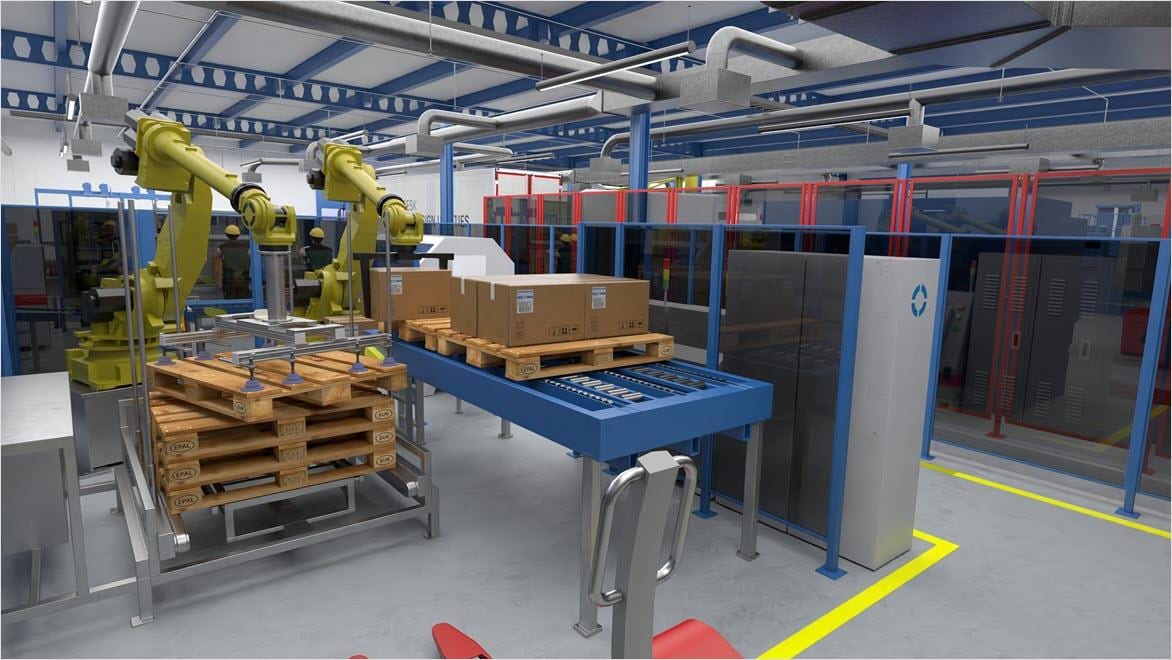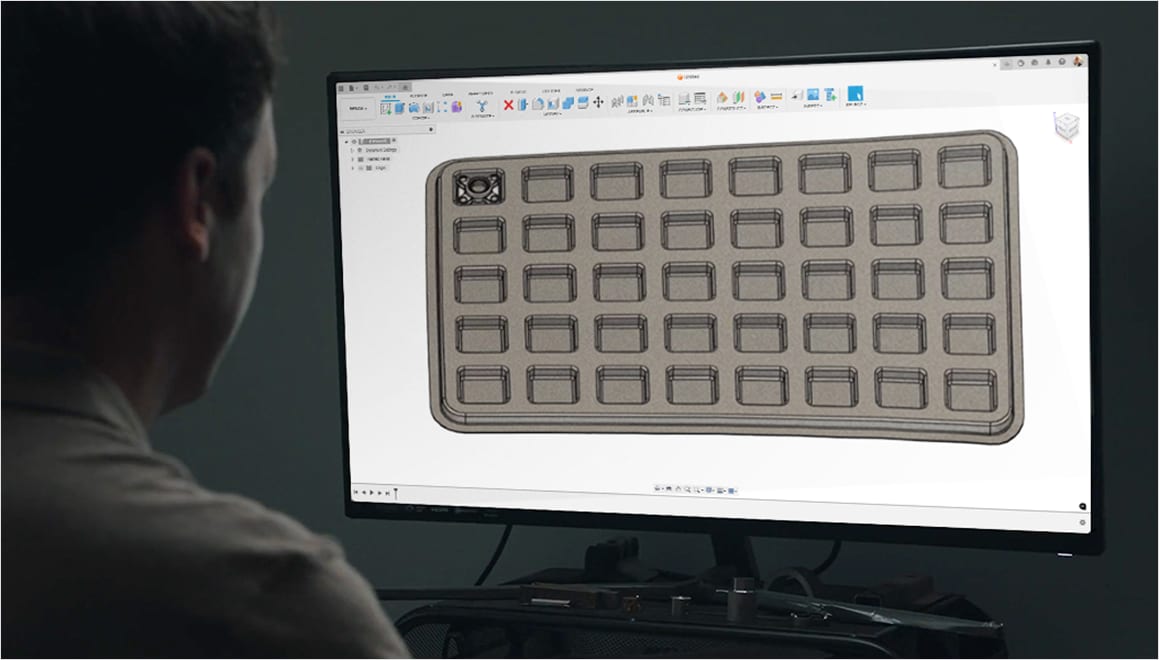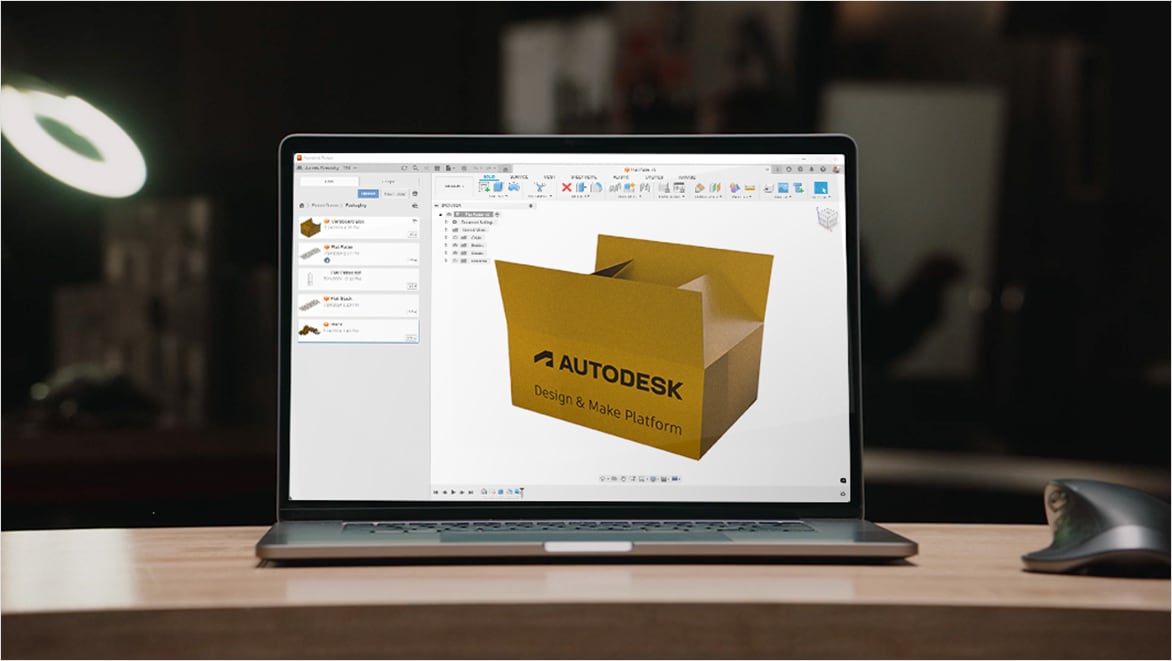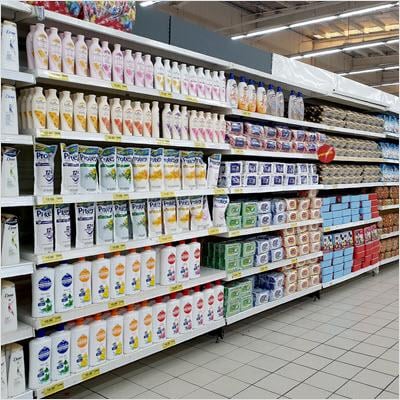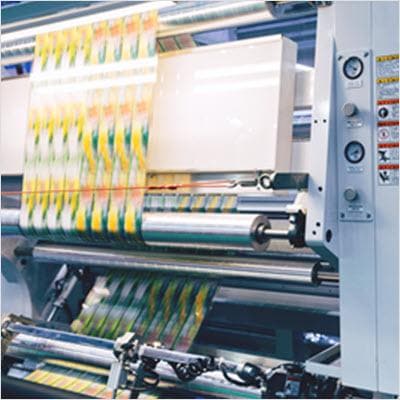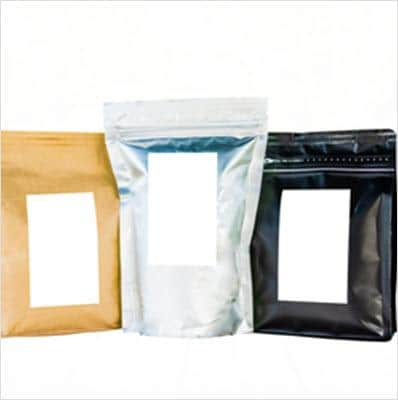& Construction

Integrated BIM tools, including Revit, AutoCAD, and Civil 3D
& Manufacturing

Professional CAD/CAM tools built on Inventor and AutoCAD
Packaging design involves designing containers, wraps, and packing for the protection, distribution, and identification of products. During the packaging design process, it's important to consider both the physical protection of the product, but also about the aesthetic appeal to customers.
Good product packaging design considers aspects like shape, size, materials, colors, typography, and relevant brand imagery. It's a factor all consumer product companies must consider as it plays a critical role in product marketing as it directly influences consumers' purchasing decisions.
3D packaging design is something every engineer must consider at some point in their process. It's used to create viable package iterations that maintain the level of protection necessary while not becoming cumbersome.
Designers can mock-up the look and feel of a package, including its shape, size, color, material, and branding elements to visualize how it will be received by the customer.
3D packaging design software, like Autodesk Fusion also allows for testing the physical properties of the package, including durability, and how external forces will interact with the product inside.
Packaging design software allows you to create 2D and 3D packaging design models to visualize how the final product will look. Simulate lighting conditions, materials, and environments to identify issues prior to production.
Gain the ability to create symmetrical, parametric designs with configured, repeatable patterns to automate the design variations, speed up the manufacturing process, and reduce the potential for human error when creating 3D package designs.
Test the physical properties of your 3D packaging design to assess durability and how well it protects the product to avoid costly mistakes. Implement more sustainable design practices by applying different materials and shapes to minimize waste.
Here are top factors to consider when choosing a packaging engineer CAD software solution.
Select a packaging engineer software that includes 3d modeling tools, material simulation, and physical property testing.
3D packaging design software should be intuitive and easy to use in order to not hinder the design process.
Choose a packaging design software that allows you to easily import and export files in formats that can be used with your other hardware and software tools.
Consider a 3D packaging design solution that helps you put eco-friendliness in mind, including material efficiency and waste reduction.
Optimize part design and performance with unlimited cloud solves for generative design, FEA, electronic cooling, injection molding, and more.
Autodesk Fusion seamlessly integrates 3D modeling, simulation, and CAM capabilities into a single #D packaging design software solution, enabling you to seamlessly take your designs from concept to production. Save time, identify potential issues early-on, and reduce the risk of costly mistakes with features that allow you to create intricate and custom designs. Further, run simulations to test the performance under real-world conditions, and make necessary changes prior to production.
Fusion's cloud technology fosters collaboration, allowing geographically dispersed teams to work together, anytime, anywhere. Changes are updated in real-time, making sure everyone is working on the most recent version of the design. Fusion also supports sustainable design practices, enabling efficient material usage and waste reduction in the design process. With flexible subscription models, it offers a cost-effective solution for businesses of all sizes, making it an excellent choice for your 3D packaging design needs.
Sheet metal tools are excellent for 3D packaging design, transforming flat sheets into 3D parts and vice versa.
The process usually involves determining package dimensions based on your product then creating a folding carton using built in sheet metal tools. These features and functionalities allow for efficient creation or modification of 3D packaging models. It's then easy to create flat patterns of the packaging for manufacture.
Create custom, parametric configured designs for the packaging variations of each product. Save time recreating design details and streamline the process of adding new packaging models for new products.
Configurations allow you to make work with a single design file, grouping commonly themed aspects like material, color, and branding to maintain consistent style.
Free-form modeling is a game-changer in 3D packaging design, especially when designing the packaging around a product in a container. Create complex, custom shapes without the limitations of traditional modeling.
Start with simple shapes and manipulate them into the desired form, fitting perfectly around the product. Ensure the product is securely packaged, reducing the risk of damage during handling or transportation.
Array and nesting tools are integral to efficient and effective 3D packaging design. The array tool allows for the creation of multiple instances of a component in a pattern, optimizing the spatial arrangement within a package.
The nesting tool, on the other hand, is used for arranging 2D shapes in the most efficient way possible on a material sheet. This reduces waste with minimal leftover material after cutting, leading to cost savings and promoting sustainability.
The flat pattern tool in packaging design software is essential for transforming 3D designs into 2D layouts, a process known as 'flattening'.
It's incredibly useful in 3D packaging design, where the 2D layout can be printed, cut, and folded into the final 3D form. The tool allows designers to visualize how a 3D model will translate into a flat pattern, identify potential issues, and make necessary adjustments.
Stress analysis allow designers to evaluate the strength and durability of their 3D packaging designs under various loads. The buckling analysis feature predicts the critical load that can cause a structure to collapse, ensuring the packaging can withstand external pressures.
The event simulation feature models the physical behaviors of the package during use, such as dropping or shaking, ensuring the contents remain undamaged. These capabilities lead to efficient, cost-effective, and sustainable packaging designs.
3D packaging design software can be used to design a wide range of components related to product packaging, including but not limited to:
Design and manufacture the packaging that directly houses the product, including containers such as bottles, cans, boxes, and bags.
Create the outer packaging used for grouping primary packaged products together, including cartons, crates, and shrink wraps.
Design and create labels, logos, and other graphical elements applied to the packaging that play a critical role in branding.
Visualize how the final product will look and functions in a real-world context, before moving to the manufacturing stage.
These resources can help you get started with packaging engineer CAD software.
Uncover how Autodesk Fusion equips designers with advanced tools for 3D modeling, simulation, and rapid prototyping, streamlining the creation of effective and appealing 3D packaging design.
This guide highlights these considerations and explains how Autodesk Fusion can enhance the entire 3D packaging design process — from concept to final production.
Explore how Autodesk Fusion revolutionizes 3D packaging design, offering tools for efficiency, innovation, and sustainability. Discover the impact of integrating Makersite and MSI plug-ins for advanced material analysis.
Get answers to popular questions around packaging engineer CAD software.
Yes, Autodesk Fusion is a cloud-based 3D CAD, CAM, and CAE packaging design software solution that integrate design, modeling, and simulation functionalities. It offers a comprehensive set of modeling tools that ensure a product's form, fit, and function with diverse analysis methods. This makes it a versatile choice for a variety of design projects, including 3D packaging design.
3D packaging design involves creating the exterior of a product. This includes choices in material and form as well as graphics, colors, and fonts that are used on wrapping, a box, a can, a bottle, or any kind of container. It's a critical component of product development as it not only provides physical protection to the product but also communicates information about the product and the brand to consumers.
3D packaging design software is used by designers to create the physical packaging for a product as well as the graphics, labels, and other elements that go on it. Packaging design software provides both 2D and 3D design capabilities, allowing designers to visualize how different designs will look in real life.
With packaging engineer CAD software, designers can experiment with different shapes, sizes, colors, and materials for the packaging. They can also create and edit the graphics and text that will appear on the packaging. Some software, like Autodesk Fusion, also includes features for testing the physical properties of the packaging, such as how well it protects the product or how it will hold up under different conditions.
When choosing packaging design software, consider the following factors:
A packaging engineer designs, develops, and tests 3D packaging solutions to protect products during transport and storage. They select materials, consider costs, and comply with regulations while focusing on sustainability. Collaborating with various teams, their ultimate goals is to create functional and visually asthetic packaging that meets industry standards and environmental goals.
Box packaging design involves creating the structure, appearance, and functionality of a box to securely contain and protect a product. It includes selecting materials, determining dimensions, and designing graphics and labeling.
With 3D packaging design, several factors must be considered to make sure it's effective, functional, and appealing. Protection and durability are important to safeguard the product during transportation, handling, and storage. Material selection needs to balance protection, cost, and environmental friendliness. Cost considerations are imprtant to maintain profitability without compromising quality. Sustainability is increasingly important, with a focus on eco-friendly materials and designs. Regulatory compliance is necessary to meet industry standards and legal requirements. Branding and aesthetics should reflect the brand's identity and attract the target audience. Functionality and convenience, such as ease of opening and storing, enhance consumer satisfaction. Further, the packaging design should provide a positive unboxing experience and include clear marketing and product information to inform and attract consumers.
Packaging engineer software is a tool used by packaging engineers to design, test, and optimize packaging solutions. This 3D packaging design software aids in creating detailed 3D models and simulations of packaging designs, allowing packaging engineers to assess their structural integrity, durability, and material efficiency. It can also help in selecting appropriate materials, ensuring regulatory compliance, and analyzing cost-effectiveness. Additionally, packaging engineer software often includes features for sustainability analysis, enabling packaging engineers to develop eco-friendly packaging solutions. Ultimately, packaging engineer CAD software streamlines the packaging development process, improves collaboration among teams, and makes sure that the final packaging is both functional and visually appealing while meeting all requirements.
